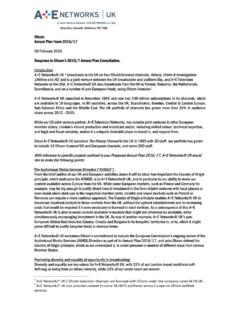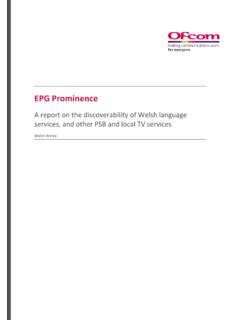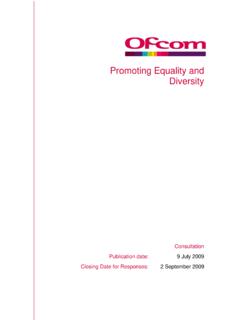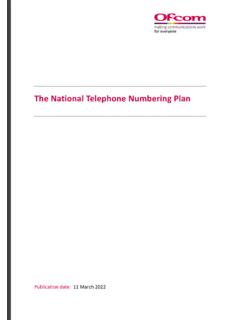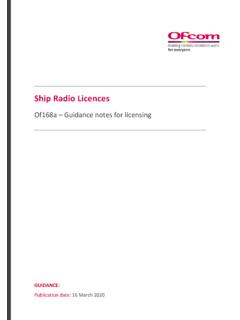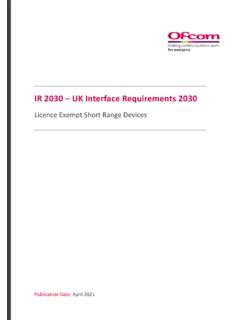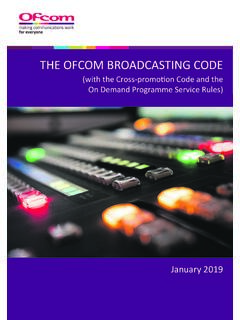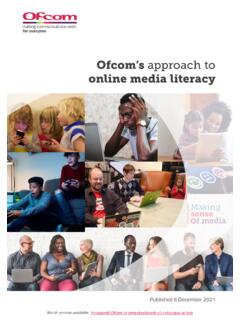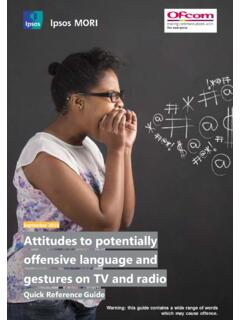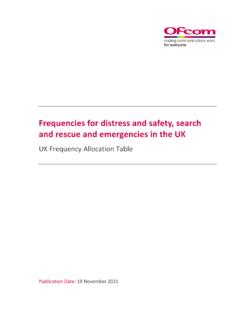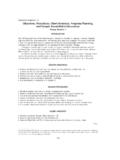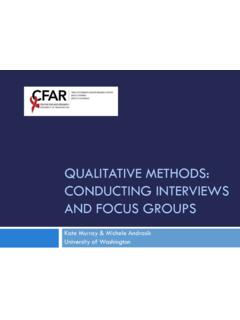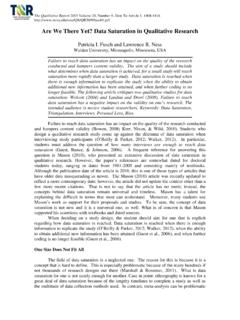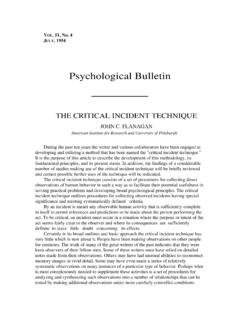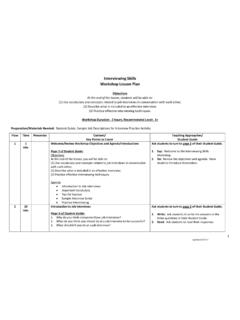Transcription of Adults’ Media Use & Attitudes - Ofcom
1 Adults' Media Use & Attitudes report 2020. Making Making sense sense o f Media of Media Published 24 June 2020. Gwneud Gwneud synnwyr 'r synnwyr 'r Overview This report examines adults' Media literacy. Ofcom 's definition of Media literacy is the ability to use, understand and create Media and communications in a variety of contexts'. The report is a reference document for industry, stakeholders and the general public. The Communications Act 2003 places a responsibility on Ofcom to promote, and to carry out research into, Media literacy. This report supports our work in this area and our wider Making Sense of Media programme. Drawing largely on our quantitative Adults' Media Literacy Tracker, the report provides evidence on Media use, Attitudes and understanding, and how these change over time, among UK adults aged 16.
2 And over. This includes a particular focus on critical thinking, or awareness, which is a core component of Media literacy, enabling people to assess and evaluate their Media environment. The report also includes a particular focus on those groups who tend not to participate digitally. This report also draws on our qualitative Adults' Media Lives research 1 and quantitative Technology 0F. Tracker to provide an over-arching narrative on the key themes of adults' Media experience in 2019. More detail, including additional demographic analysis and all questions that were not possible to fit in this report, can be found in the accompanying full chart pack. It is important to note that fieldwork for the Adults' Media Literacy Tracker was carried out in autumn 2019, so the current coronavirus concerns and restrictions were not a factor.
3 We recognise that a number of the trends may have changed and/or intensified during the current crisis. 1. Our Adults' Media Lives research is a qualitative, longitudinal ethnographic video-based project which has been running since 2005. The research has followed the same (as far as possible) 19 participants over time, interviewing them at home to understand their relationship with digital Media . 1. Key findings: Digital Media take-up and use Adults increasingly prefer smaller, portable devices for going online: 34% only use devices other than a computer to go online, an increase since 2018, and 11% only use a smartphone to go online. Connected devices and smart technologies are increasingly being adopted. Thirteen per cent of UK adults do not use the internet, unchanged since 2014, and three- quarters of them say that nothing would encourage them to go online in the next 12 months.
4 Those aged 55+ or in the DE socio-economic group remain less likely to go online. Two-thirds of UK adults access content on demand, an increase since 2018. Social Media users are increasingly using multiple social Media sites/apps. Internet users are less likely than in 2018 to agree that people should be able to hide their identity online to express their views anonymously. Device use and online activity can also impact critical engagement. Critical understanding Internet users are less likely than in 2018 to validate online information sources, and one in ten internet users do not consider the truthfulness of factual information they find online. People are increasingly aware of personal data issues, but there is still a gap between their stated confidence in managing personal data and their understanding of the different ways in which companies collect personal data online.
5 Similarly, there is a continued gap in confidence vs. understanding of online advertising; only half of search engine users can correctly identify advertising on Google search results and understand that this is the only reason these results appear at the top of the list. 2. Media use, by age: a snapshot 16-24s: 25-34s: 99% use a mobile phone 99% use a mobile phone 16% only use a smartphone 20% only use a smartphone to go online to go online 76% watch on-demand or streamed content 77% watch on-demand or streamed content 95% have a social Media profile 93% have a social Media profile 44% correctly identify advertising on Google 54% correctly identify advertising on Google (among search engine users) (among search engine users).
6 89% are aware of at least one way in which 91% are aware of at least one way in which companies can collect personal data online companies can collect personal data online (among internet users) (among internet users). 2% do not use the internet <1% do not use the internet 35-44s: 45-54s: 99% use a mobile phone 99% use a mobile phone 10% only use a smartphone 13% only use a smartphone to go online to go online 78% watch on-demand or streamed content 69% watch on-demand or streamed content 88% have a social Media profile 82% have a social Media profile 51% correctly identify advertising on Google 49% correctly identify advertising on Google (among search engine users) (among search engine users). 91% are aware of at least one way in which 88% are aware of at least one way in which companies can collect personal data online companies can collect personal data online (among internet users) (among internet users).
7 2% do not use the internet 7% do not use the internet More likely than the UK average Less likely than the UK average 3. 55-64s: 65-74s: 95% use a mobile phone 88% use a mobile phone 6% only use a smartphone 3% only use a smartphone to go online to go online 59% watch on-demand or streamed content 47% watch on-demand or streamed content 58% have a social Media profile 39% have a social Media profile 50% correctly identify advertising on Google 48% correctly identify advertising on Google (among search engine users) (among search engine users). 88% are aware of at least one way in which 82% are aware of at least one way in which companies can collect personal data online companies can collect personal data online (among internet users) (among internet users).
8 17% do not use the internet 30% do not use the internet 75+: 75% use a mobile phone 3% only use a smartphone to go online 23% watch on-demand or streamed content 21% have a social Media profile 40% correctly identify advertising on Google (among search engine users). 63% are aware of at least one way in which companies can collect personal data online (among internet users). 51% do not use the internet More likely than the UK average Less likely than the UK average 4. Media use, by socio-economic group : a snapshot AB: C1: 97% use a mobile phone 96% use a mobile phone 2% only use a smartphone to 8% only use a smartphone to go online go online 80% watch on-demand or streamed content 71% watch on-demand or streamed content 79% have a social Media profile 78% have a social Media profile 54% correctly identify advertising on Google 51% correctly identify advertising on Google (among search engine users) (among search engine users).
9 94% are aware of at least one way in which 89% are aware of at least one way in which companies can collect personal data online companies can collect personal data online (among internet users) (among internet users). 4% do not use the internet 7% do not use the internet C2: DE: 96% use a mobile phone 89% use a mobile phone 15% only use a smartphone to 19% only use a smartphone to go online go online 60% watch on-demand or streamed content 45% watch on-demand or streamed content 70% have a social Media profile 59% have a social Media profile 48% correctly identify advertising on Google 41% correctly identify advertising on Google (among search engine users) (among search engine users). 86% are aware of at least one way in which 78% are aware of at least one way in which companies can collect personal data online companies can collect personal data online (among internet users) (among internet users).
10 14% do not use the internet 27% do not use the internet More likely than the UK average Less likely than the UK average 5. Media use, by nation: a snapshot England: Northern Ireland: 95% use a mobile phone 98% use a mobile phone 10% only use a smartphone to go online 29% only use a smartphone to go online 64% watch on-demand or streamed content 60% watch on-demand or streamed content 72% have a social Media profile 66% have a social Media profile 49% correctly identify advertising on Google 32% correctly identify advertising on Google (among search engine users) (among search engine users). 88% are aware of at least one way in which 73% are aware of at least one way in which companies can collect personal data online companies can collect personal data online (among internet users) (among internet users).
